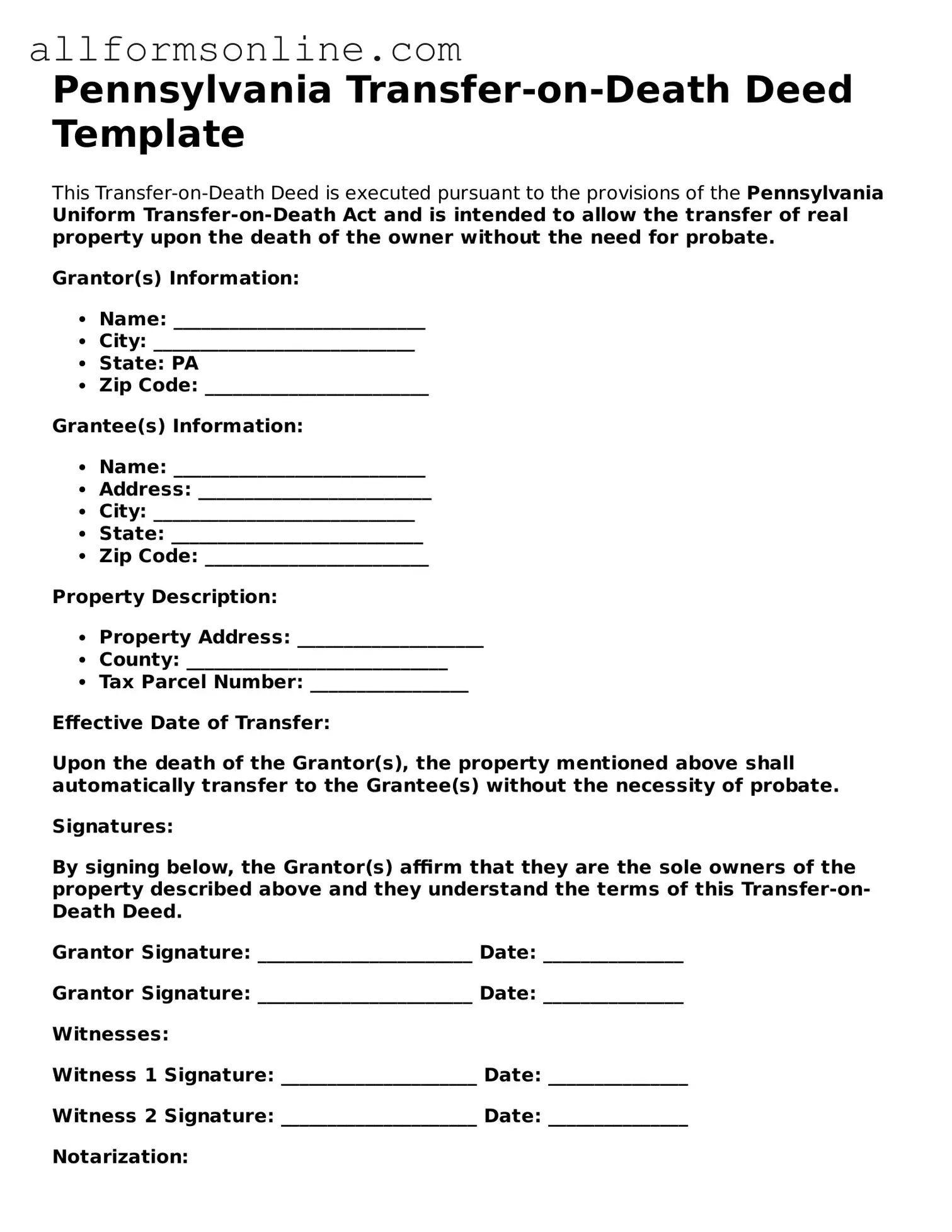What is a Transfer-on-Death Deed in Pennsylvania?
A Transfer-on-Death Deed (TOD Deed) is a legal document that allows property owners in Pennsylvania to designate a beneficiary who will receive the property automatically upon the owner's death. This means the property can transfer outside of the probate process, simplifying the transfer for your loved ones.
Who can use a Transfer-on-Death Deed?
Any individual who owns real estate in Pennsylvania can use a Transfer-on-Death Deed. This includes single individuals, married couples, and even joint owners. However, it is important to ensure that the deed is properly executed and recorded to be effective.
How do I create a Transfer-on-Death Deed?
To create a Transfer-on-Death Deed, you must complete the form with specific information, including the property description and the name of the beneficiary. After filling out the deed, you need to sign it in the presence of a notary public. Finally, the deed must be recorded in the county where the property is located to be valid.
Can I change or revoke a Transfer-on-Death Deed?
Yes, you can change or revoke a Transfer-on-Death Deed at any time while you are still alive. To do this, you must create a new deed that either names a different beneficiary or explicitly states that the previous deed is revoked. Remember to record the new deed to ensure it takes effect.
What happens if I don’t name a beneficiary in the Transfer-on-Death Deed?
If you do not name a beneficiary, the property will not transfer upon your death. Instead, it will become part of your estate and will go through the probate process. This can lead to delays and additional costs for your heirs.
Are there any tax implications associated with a Transfer-on-Death Deed?
Generally, there are no immediate tax implications when creating a Transfer-on-Death Deed. However, the beneficiary may be responsible for property taxes after the transfer occurs. It’s advisable to consult with a tax professional to understand any potential tax consequences.
Can a Transfer-on-Death Deed be contested?
Yes, like any other estate planning document, a Transfer-on-Death Deed can be contested. Heirs or other interested parties may challenge the deed based on claims such as lack of capacity, undue influence, or improper execution. It’s crucial to ensure that the deed is created and executed correctly to minimize the risk of disputes.
Is a Transfer-on-Death Deed the same as a will?
No, a Transfer-on-Death Deed is not the same as a will. A will outlines how your assets should be distributed after your death and goes through probate. In contrast, a Transfer-on-Death Deed allows for the direct transfer of property to a beneficiary without going through probate, making the process quicker and often less expensive.
Where can I find the Transfer-on-Death Deed form in Pennsylvania?
You can find the Transfer-on-Death Deed form on the official Pennsylvania government website or at your local county recorder’s office. It’s important to use the most current version of the form to ensure compliance with state laws.
